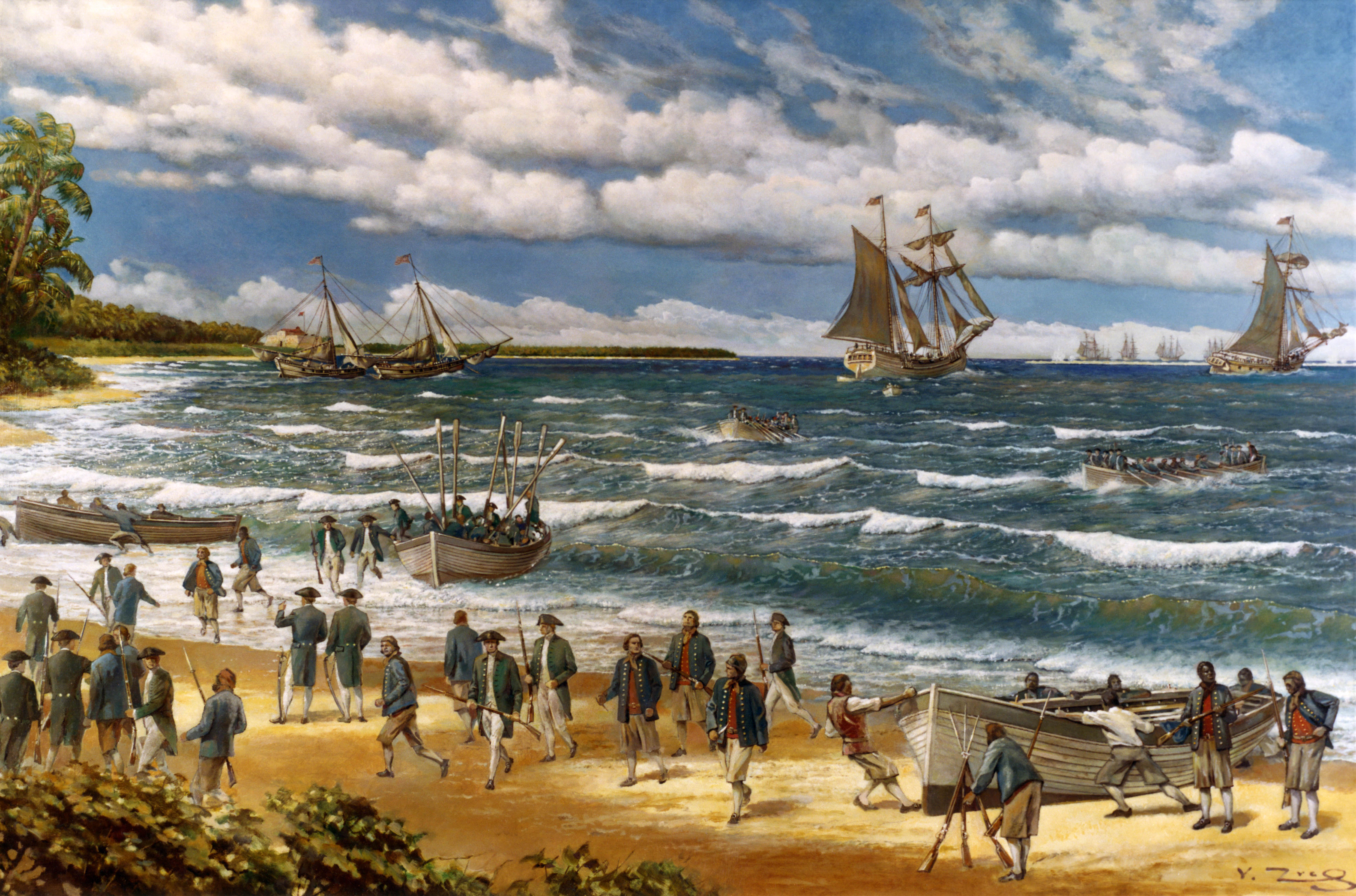|
United States Navy Judge Advocate General's Corps
The Judge Advocate General's Corps, also known as the "JAG Corps" or "JAG", is the legal arm of the United States Navy. Today, the corps consists of a worldwide organization of more than 730 commissioned officers serving as judge advocates, 30 limited duty officers (law), 500 enlisted members (primarily in the Legalman rating) and nearly 275 civilian personnel, all serving under the direction of the Judge Advocate General of the Navy. The headquarters of the Judge Advocate General's Corps of the United States Department of the Navy is located at the Washington Navy Yard in Washington, D.C. History In 1775, the Continental Congress enacted the Articles of Conduct, governing the ships and men of the Continental Navy. However, soon after the end of the Revolutionary War, all of these ships were sold and the Continental Navy, to include its Continental Marines, the precursor of today's United States Navy and Marine Corps, were disbanded. In July 1797, Congress, after authorizing con ... [...More Info...] [...Related Items...] OR: [Wikipedia] [Google] [Baidu] |
United States Department Of The Navy
The United States Department of the Navy (DoN) is one of the three military departments within the Department of Defense of the United States of America. It was established by an Act of Congress on 30 April 1798, at the urging of Secretary of War James McHenry, to provide a government organizational structure to the United States Navy (USN);Bernard C. Steiner and James McHenry, The life and correspondence of James McHenry' (Cleveland: Burrows Brothers Co., 1907). since 1834, it has exercised jurisdiction over the U.S. Marine Corps (USMC) and, during wartime, the U.S. Coast Guard (USCG), though each remains an independent service branch. It is led by the Secretary of the Navy (SECNAV), a statutory civilian officer. The Department of the Navy was an executive department, whose secretary served on the president's cabinet, until 1949, when amendments to the National Security Act of 1947 established the Department of Defense as a unified department for all military service ... [...More Info...] [...Related Items...] OR: [Wikipedia] [Google] [Baidu] |
Continental Marines
The Continental Marines were the Amphibious warfare, amphibious infantry of the Thirteen Colonies, American Colonies (and later the United States) during the American Revolutionary War. The Corps was formed by the Continental Congress on November 10, 1775 and was disbanded in 1783. Their mission was multi-purpose, but their most important duty was to serve as onboard security forces, protecting the captain of a ship and his officers. During naval engagements, in addition to manning the cannons along with the crew of the ship, Marine sharpshooters were stationed in the fighting tops of a ship's masts specifically to shoot the opponent's officers, Navy, naval gunners, and helmsmen. In all, there were 131 Colonial Marine officers and probably no more than 2,000 enlisted Colonial Marines. Though individual Marines were enlisted for the few U.S. Naval vessels, the organization would not be re-created until 1798. Despite the gap between the disbanding of the Continental Marines and t ... [...More Info...] [...Related Items...] OR: [Wikipedia] [Google] [Baidu] |
Uniform Code Of Military Justice
The Uniform Code of Military Justice (UCMJ, 10 U.S.C. §§ 801–946 is the foundation of military law in the United States. It was established by the United States Congress in accordance with the authority given by the United States Constitution in Article I, Section 8, which provides that "The Congress shall have Power....To make Rules for the Government and Regulation of the land and naval forces". History On June 30, 1775, the Second Continental Congress established 69 Articles of War to govern the conduct of the Continental Army. Effective upon its ratification in 1788, Article I, Section 8 of the United States Constitution provided that Congress has the power to regulate the land and naval forces. On 10 April 1806, the United States Congress enacted 101 Articles of War, which were not significantly revised until over a century later. Discipline in the sea services was provided under the Articles for the Government of the United States Navy (commonly referred to as ''Ro ... [...More Info...] [...Related Items...] OR: [Wikipedia] [Google] [Baidu] |
Rear Admiral
Rear admiral is a senior naval flag officer rank, equivalent to a major general and air vice marshal and above that of a commodore and captain, but below that of a vice admiral. It is regarded as a two star "admiral" rank. It is often regarded as a two-star rank with a NATO code of OF-7. The term originated in the days of naval sailing squadrons and can trace its origins to the Royal Navy. Each naval squadron was assigned an admiral as its head, who commanded from the centre vessel and directed the squadron's activities. The admiral would in turn be assisted by a vice admiral, who commanded the lead ships that bore the brunt of a battle. In the rear of the squadron, a third admiral commanded the remaining ships and, as this section was considered to be in the least danger, the admiral in command of it was typically the most junior. This has continued into the modern age, with rear admiral the most junior admiralty of many navies. In most European navies, the equivalent rank i ... [...More Info...] [...Related Items...] OR: [Wikipedia] [Google] [Baidu] |
World War I
World War I (28 July 1914 11 November 1918), often abbreviated as WWI, was one of the deadliest global conflicts in history. Belligerents included much of Europe, the Russian Empire, the United States, and the Ottoman Empire, with fighting occurring throughout Europe, the Middle East, Africa, the Pacific, and parts of Asia. An estimated 9 million soldiers were killed in combat, plus another 23 million wounded, while 5 million civilians died as a result of military action, hunger, and disease. Millions more died in genocides within the Ottoman Empire and in the 1918 influenza pandemic, which was exacerbated by the movement of combatants during the war. Prior to 1914, the European great powers were divided between the Triple Entente (comprising France, Russia, and Britain) and the Triple Alliance (containing Germany, Austria-Hungary, and Italy). Tensions in the Balkans came to a head on 28 June 1914, following the assassination of Archduke Franz Ferdin ... [...More Info...] [...Related Items...] OR: [Wikipedia] [Google] [Baidu] |
William Butler Remey
William Butler Remey (1842 – January 20, 1895) was an American military officer who served in the American Civil War and was the first Judge Advocate General of the Navy, serving from 1880 to 1892. Early life William Butler Remey was born in 1842, in Burlington, Iowa to Eliza Smith (née Howland) and William Butler Remey. His father was captain of a steamboat in Burlington. He had two brothers, George C. Remey, who served in the Navy, and John T. Remey, president of the National State Bank in Burlington. Career Remey became a captain of a Burlington militia company known as the Zouave Light Guards, who organized in 1861. In 1861, Remey was appointed by Senator Grimes as a second lieutenant in the U.S. Marine Corps. From 1862 to 1863, he served on USS Sabine, a sailing frigate. He was promoted to first lieutenant around 1864 and served in the Norfolk Naval Shipyard from 1864 to 1865. He served on the USS North Carolina in 1865 and USS Vanderbilt from 1865 to 1867 and the US ... [...More Info...] [...Related Items...] OR: [Wikipedia] [Google] [Baidu] |
United States Congress
The United States Congress is the legislature of the federal government of the United States. It is bicameral, composed of a lower body, the House of Representatives, and an upper body, the Senate. It meets in the U.S. Capitol in Washington, D.C. Senators and representatives are chosen through direct election, though vacancies in the Senate may be filled by a governor's appointment. Congress has 535 voting members: 100 senators and 435 representatives. The U.S. vice president has a vote in the Senate only when senators are evenly divided. The House of Representatives has six non-voting members. The sitting of a Congress is for a two-year term, at present, beginning every other January. Elections are held every even-numbered year on Election Day. The members of the House of Representatives are elected for the two-year term of a Congress. The Reapportionment Act of 1929 establishes that there be 435 representatives and the Uniform Congressional Redistricting Act requires ... [...More Info...] [...Related Items...] OR: [Wikipedia] [Google] [Baidu] |
House Counsel
A corporate lawyer or corporate counsel is a type of lawyer who specializes in corporate law. Corporate lawyers working inside and for corporations are called in-house counsel. Roles and responsibilities The role of a corporate lawyer is to ensure the legality of commercial transactions, advising corporations on their legal rights and duties, including the duties and responsibilities of corporate officers. In order to do this, they must have knowledge of aspects of contract law, tax law, accounting, securities law, bankruptcy, intellectual property rights, licensing, zoning laws, and the laws specific to the business of the corporations that they work for. In recent years, controversies involving well-known companies such as Walmart and General Motors have highlighted the complex role of corporate lawyers in internal investigations, in which attorney–client privilege could be considered to shelter potential wrongdoing by the company. If a corporate lawyer's internal compan ... [...More Info...] [...Related Items...] OR: [Wikipedia] [Google] [Baidu] |
Solicitor Of The Navy Department
The Solicitor General of the Navy was an office of the United States Department of the Navy that existed periodically from 1862 until 1929. In 1941, it was superseded by the permanent office of General Counsel of the Navy. The Solicitor General of the Navy was the senior legal adviser to the United States Secretary of the Navy. Solicitors General of the Navy, 1862–1929 {, class="wikitable" !Name !Assumed office !Left office !President appointed by , - , Nathaniel Wilson , 1862 , March 1865 , Abraham Lincoln , - , William E. Chandler , March 1865 , Fall 1865 , Abraham Lincoln , - , John Augustus Bolles , Fall 1865 , May 25, 1878 , Andrew Johnson , - , Edwin P. Hanna , July 1, 1899 , July 3, 1909 , William McKinley , - , Henry M. Butler , February 1, 1910 , March 31, 1911 , William Howard Taft , - , Tristam B. Johnson , April 1, 1911 , July 16, 1911 , William Howard Taft , - , Harry W. Miller , January 3, 1912 , August 9, 1913 , William Howard Taft , - , Graham Egerton , 1 ... [...More Info...] [...Related Items...] OR: [Wikipedia] [Google] [Baidu] |
Courts-martial
A court-martial or court martial (plural ''courts-martial'' or ''courts martial'', as "martial" is a postpositive adjective) is a military court or a trial conducted in such a court. A court-martial is empowered to determine the guilt of members of the armed forces subject to military law, and, if the defendant is found guilty, to decide upon punishment. In addition, courts-martial may be used to try prisoners of war for war crimes. The Geneva Conventions require that POWs who are on trial for war crimes be subject to the same procedures as would be the holding military's own forces. Finally, courts-martial can be convened for other purposes, such as dealing with violations of martial law, and can involve civilian defendants. Most navies have a standard court-martial which convenes whenever a ship is lost; this does not presume that the captain is suspected of wrongdoing, but merely that the circumstances surrounding the loss of the ship be made part of the official record. M ... [...More Info...] [...Related Items...] OR: [Wikipedia] [Google] [Baidu] |
Gideon Welles
Gideon Welles (July 1, 1802 – February 11, 1878), nicknamed "Father Neptune", was the United States Secretary of the Navy from 1861 to 1869, a cabinet post he was awarded after supporting Abraham Lincoln in the 1860 election. Although opposed to the Union blockade of Southern ports, he duly carried out his part of the Anaconda Plan, largely sealing off the Confederate coastline and preventing the exchange of cotton for war supplies. This is viewed as a major cause of Union victory in the Civil War, and his achievement in expanding the Navy almost tenfold was widely praised. Welles was also instrumental in the Navy's creation of the Medal of Honor. Early political career Gideon Welles, the son of Samuel Welles and Ann Hale, was born on July 1, 1802, in Glastonbury, Connecticut. His father was a shipping merchant and fervent Jeffersonian; he was a member of the Convention, which formed the first state Connecticut Constitution in 1818 that abolished the colonial charter and offi ... [...More Info...] [...Related Items...] OR: [Wikipedia] [Google] [Baidu] |
United States Secretary Of The Navy
The secretary of the Navy (or SECNAV) is a statutory officer () and the head (chief executive officer) of the United States Department of the Navy, Department of the Navy, a military department (component organization) within the United States Department of Defense. By law, the secretary of the Navy must civilian control of the military, be a civilian at least five years removed from active military service. The secretary is appointed by the President of the United States, president and requires confirmation by the United States Senate, Senate. The secretary of the Navy was, from its creation in 1798, a member of the president's United States Cabinet, Cabinet until 1949, when the secretary of the Navy (and the secretaries of the United States Secretary of the Army, Army and United States Secretary of the Air Force, Air Force) were by amendments to the National Security Act of 1947 made subordinate to the United States Secretary of Defense, secretary of defense. On August 7, 202 ... [...More Info...] [...Related Items...] OR: [Wikipedia] [Google] [Baidu] |
.png)




